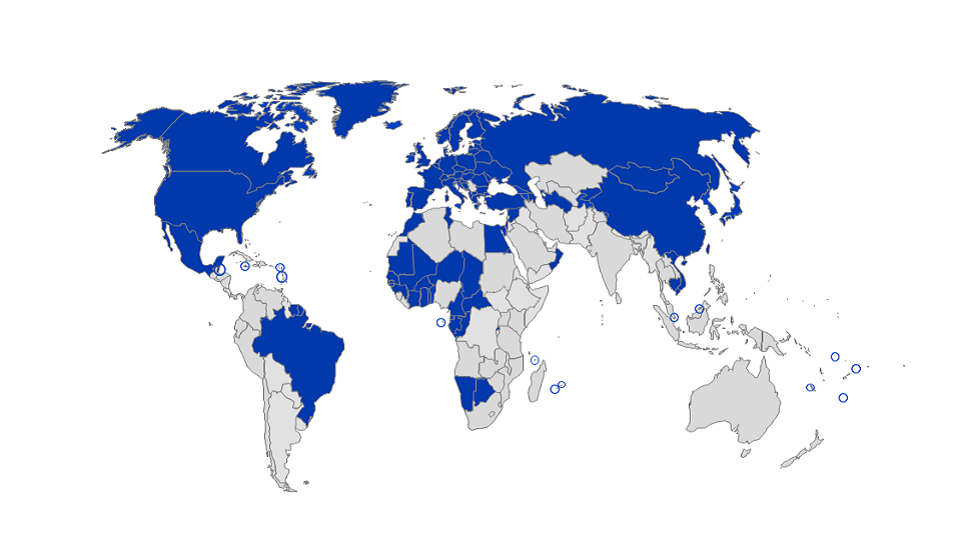Becoming a Member of the Hague System
Becoming a member of the Hague System is relatively simple, the international procedural mechanism of the Geneva Act (1999) being flexible enough to accommodate your country’s own domestic requirements.
How? By allowing your country to make declarations on specific requirements (e.g., unity of design, deferment of publication, etc.).

We currently have 79 Contracting Parties covering 96 countries. (click to enlarge)
The basics
The Hague System eliminates the need for applicants to file separate and multiple applications for design protection in individual countries or regions.
- International applications are filed according to the requirements and procedures established by the Hague Agreement.
- The domestic legal framework of each Contracting Party governs the design protection provided by the resulting international registrations.
Filing applications and renewing registrations | Managing registrations
Who can join?
- Any state that is a member of WIPO; and
- any intergovernmental organization (IGO) that has:
- at least one member that is also a member of WIPO; and
- an office through which design protection may be obtained, with effect in the territory in which the IGO’s constituting treaty applies.
How to join
Preparatory work
Accession
Entry into force
Benefits of the Hague System for members
Joining the Hague System stimulates innovation and creativity, helping local businesses and designers expand into, and protect their designs within, new global markets. At the same time, the local economy and the community at large benefit from investments by foreign businesses that can easily and efficiently secure design protection within that jurisdiction.
Efficiency
Under the Hague System, the IP offices of Contracting Parties don’t need to worry about data entry, fee collection, formal examination, registration certificates, publication, etc. WIPO takes care of all of this.
Economy boosting
The Hague System makes it easier for businesses and designers to:
- protect and commercialize their designs in foreign markets; and
- ensure a return on the investment they make in creating and marketing designs.
What is the value added?
…for your IP office
More business; less paper work, with WIPO taking care of all procedural matters.
…for your economy
Creation of new business opportunities for individual designers and SMEs with a limited IP budget, thanks to the Hague System’s simple and cost-efficient approach to protecting designs internationally.
Find out more
Want to find out more about becoming a member of the Hague System?
Webinars
We organize webinars to support IP offices in their accession preparations and to ensure that new Contracting Parties fully benefit from membership of the Hague System. Let us know about your own webinar needs or wishes.
Tools

International Designs Bulletin
The Bulletin is the Hague System’s official publication of international registrations.Important! For the IP offices of Contracting Parties, the Bulletin serves as official notification of their country or region’s designation in an international registration.
Find out more about the Bulletin.

Hague System Member Profiles
Details of the laws, practices and procedures of all Hague System members.
Find out more about Hague System Member Profiles.

Statistics
Annual, quarterly and monthly statistics on use of the Hague System by country.
Resources
Legal texts
Access all Hague System legal instruments, including regulations and administrative instructions.
Declarations
Access a full list of declarations made by Contracting Parties, including details of the maximum duration of protection.
Information notices
Our information notices inform you of important developments to the Hague system.
Fees
The Schedule of Fees provides details of standard and individual designation fees payable to a Contracting Party upon designation in an international application.